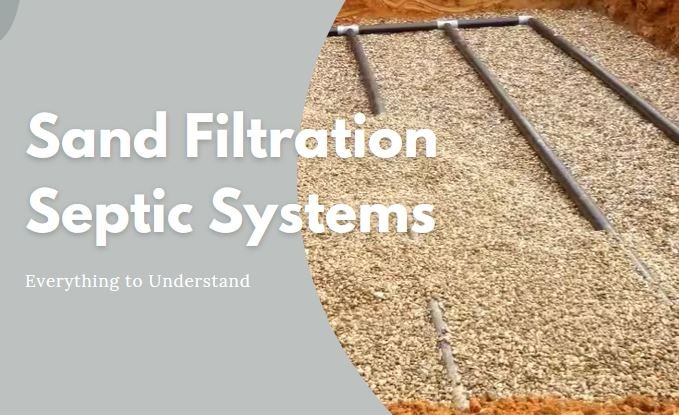Using sand filtration septic systems is often done these days. This kind of sewage system will work well in areas with limited land. Usually, you need a large land or open area for the septic system to build the system and allow the sewage water to drain and get processed.
However, this sand filter system is probably the best method in a smaller area. The full information is going to be explained here.
A sand filter septic system is a type of wastewater treatment system that uses sand and sometimes other media to filter and treat sewage before it’s released into the soil.
How to Install a Sand Filter Septic System
The first thing you need to know about sand filtration septic systems is what it is and how to install them. Basically, it is a regular septic system with beds of gravel, sand, and other granule materials inside the septic tank, allowing dirty water to get absorbed and processed easily. Here is how you can install them.

Installing the Septic System
Installing the septic system needs to be done by professionals as it takes several steps and may not be a DIY project. Those steps include installing the pipes, preparing the gravel-filled septic tank, and many more.
Where to Install Them
The septic system’s installation must be done in the front or back yard area where it is not covered by something hard or permanent. This is why the system won’t work if you place a bed, cement, concrete, or anything else on top of the system.
Sand Filter Septic System Problems
Like any other system, the sand filter septic has its own flaws. For those who are looking for the potential problems for the system, they will be explained down below. It should help you understand what may go wrong with the system.
Pipe Clogging
This system uses a smaller type of pipe. They can usually deliver the sewage water from the house to the tank. However, they do it slowly so that pipe clogging is something that you cannot just avoid.
Water Overload
This is like the opposite of clogging. Sometimes, the water getting through the pipe is too much, overloading the whole thing. It makes the septic tank is full of water, and they cannot just get absorbed by the gravel pad easily.
To avoid these problems, following proper maintenance practices is crucial, using the system as intended and promptly addressing any issues. Regular inspections, scheduled pumping, and adherence to local regulations and guidelines are essential for the long-term success of a sand filter septic system.
If you encounter problems with your sand filter septic system, it’s advisable to consult a qualified septic system professional for assessment and appropriate solutions.
Sand Filter Septic System Pros and Cons
You will have to understand the pros and cons of the system. They will tell you the system’s good and bad and may help you consider whether or not to use one at home. Here they are for you:
The Pros
This method’s pros include that it can be used in a smaller house with limited open area. The system is also more eco-friendly and uses no chemical additives to process the water.
The Cons
The cons include the system using smaller everything, including pipes and the container for the sewage water. This is why leakage and clogging will be something you will face quite often.
In summary, sand filter septic systems can provide effective wastewater treatment when properly designed, installed, and maintained. However, they come with specific challenges, including maintenance demands, initial cost, and the need for careful use.
Now you know everything about the system. You can decide to use the system at home. When living in an area with limited land, sand filtration septic systems should be the best option.


